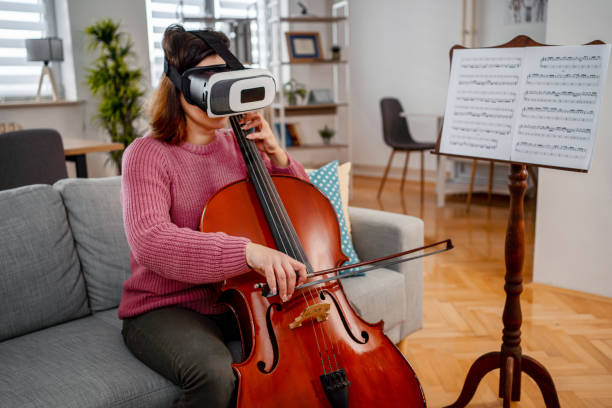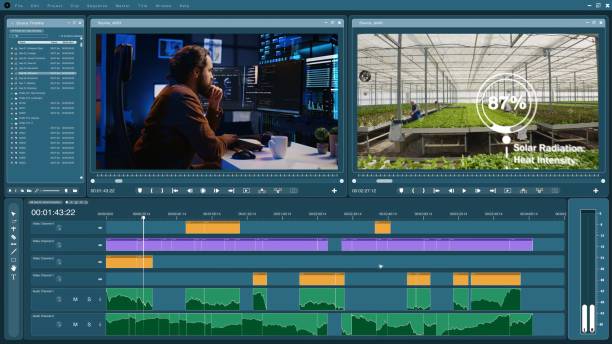In recent years, the world has seen a significant shift in how people experience live music. With the onset of global events like the pandemic, virtual concerts and online performances have emerged as a game-changing alternative to traditional in-person shows. These digital experiences have not only allowed fans to continue enjoying their favorite artists but have also opened up new opportunities for performers to connect with audiences across the globe. Virtual concerts break down geographical barriers, offering fans access to live events they might not otherwise attend. This evolution in the entertainment industry has transformed the way we think about live performances, making them more accessible, inclusive, and innovative.
How Virtual Concerts Are Changing the Music Industry
Virtual concerts have disrupted the traditional music industry by offering an alternative that’s both convenient and safe for fans. Before the rise of online performances, attending a concert typically required purchasing tickets, traveling, and finding accommodations. Virtual concerts eliminate these logistical challenges, providing an affordable and accessible experience for music lovers. Artists are now able to reach a broader audience, including fans who may have never had the chance to see them live. For performers, online platforms offer a new way to monetize their work through ticket sales, merchandise, and brand partnerships. As a result, virtual concerts have become a viable and valuable alternative to traditional live events, changing the business model of the music industry.
The Technology Behind Virtual Concerts
Behind every successful virtual concert is cutting-edge technology. Streaming platforms like YouTube, Twitch, and even dedicated music apps allow artists to broadcast live performances directly to their audiences. The technology behind these events includes high-quality cameras, sound systems, and interactive features that engage viewers. Some virtual concerts go beyond traditional streaming, incorporating augmented reality (AR) and virtual reality (VR) to create immersive experiences. For instance, fans can watch a performance from different angles, interact with the environment, or even attend a virtual concert in a digitally created world. This integration of advanced tech makes virtual concerts a unique and captivating way to experience live music from the comfort of your own home.
The Accessibility and Inclusivity of Virtual Concerts
One of the most significant benefits of virtual concerts is their ability to offer accessibility and inclusivity to a global audience. Fans no longer have to worry about the location or availability of tickets, as virtual concerts can be streamed from anywhere in the world. This means people from all walks of life, regardless of their geographical location, can attend these events. Additionally, virtual performances often offer options for those with disabilities, such as closed captions or audio descriptions. This inclusivity makes virtual concerts an attractive alternative for many, particularly those who have previously felt excluded from attending live performances due to physical, financial, or logistical barriers.
Virtual Concerts as a Platform for Emerging Artists
While major artists have certainly benefited from the rise of virtual concerts, these online performances have also provided a valuable platform for emerging musicians to showcase their talent. For many up-and-coming artists, virtual concerts are an affordable and accessible way to reach a larger audience. These artists can use streaming platforms to host live shows, engage with fans, and even receive direct feedback. This instant connection with a global audience can help build a loyal fan base that might otherwise take years to develop. Virtual concerts level the playing field, allowing new artists to break through and get noticed without the need for a major record label or large-scale production.
Interactive Features That Enhance Virtual Concerts
One of the reasons virtual concerts have gained so much popularity is due to the interactive features they offer. Unlike traditional concerts, where fans are passive spectators, virtual concerts often provide opportunities for viewers to engage with the performance. Features such as live chats, Q&A sessions, and voting for setlists allow fans to interact with the artist and influence the performance. These interactions create a more personal experience, as fans can feel involved in the event. Additionally, some virtual concerts offer live streaming options with multiple camera angles, giving fans control over their viewing experience. These interactive elements make virtual concerts more engaging and memorable, ensuring that fans feel like they are part of the show.
Virtual Concerts and Their Impact on the Global Fan Community
Virtual concerts have had a profound impact on the global fan community by making it easier for people to connect with others who share similar interests. Fans from different countries and cultures can now come together in virtual spaces to enjoy live music. This global fan base allows artists to connect with people from places they might not have visited on their tours. Additionally, fans who attend virtual concerts can bond over shared experiences in real-time, whether it’s through live comments, social media posts, or fan-created content. The ability to connect with like-minded individuals, regardless of location, has helped create a more inclusive and global community of music lovers.
The Future of Virtual Concerts and Online Performances
The future of virtual concerts and online performances looks incredibly promising. As technology continues to advance, the experiences offered by virtual concerts will only get better. Virtual reality (VR) and augmented reality (AR) are expected to become more immersive, allowing fans to feel as though they are right there with the performers. Streaming services are also likely to improve in terms of quality, offering high-definition video and enhanced sound. As the demand for virtual events continues to grow, it’s likely that more artists, venues, and organizations will invest in this form of entertainment. With more platforms supporting virtual concerts, it’s possible that live music will become a hybrid experience, where fans can choose between in-person and virtual attendance.
Monetizing Virtual Concerts and Online Performances
Just like traditional concerts, virtual performances offer a variety of monetization opportunities for artists and organizers. Ticket sales remain a primary source of revenue, but virtual concerts also open up other revenue streams. Artists can sell merchandise directly to their fans, use paid promotions, and even partner with brands for sponsorship deals. Additionally, streaming platforms may offer revenue sharing through ad-supported broadcasts or subscription models. As the market for virtual concerts continues to grow, artists and industry professionals are finding new ways to generate income from these online performances, ensuring that virtual concerts are not just a temporary trend but a sustainable business model for the future.
Virtual Concerts During the Pandemic: A Necessity or a New Normal?
During the global pandemic, virtual concerts became more than just an option—they became a necessity. With social distancing measures in place and restrictions on large gatherings, artists and fans alike turned to virtual platforms as a way to keep the music going. In many ways, the pandemic accelerated the rise of virtual performances, as artists and event organizers adapted to the new reality. However, as the world begins to recover, the question remains: will virtual concerts remain a part of the entertainment landscape, or were they simply a temporary solution? Given the convenience and accessibility they offer, virtual concerts are likely to continue alongside traditional performances, becoming an integral part of the entertainment industry moving forward.






